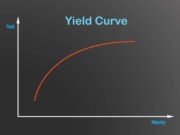What is an ‘Impaired Asset’
An impaired asset is a company’s asset that has a market price less than the value listed on the company’s balance sheet. Accounts that are likely to be written down are the company’s goodwill, accounts receivable and long-term assets because the carrying value has a longer span of time for impairment. Upon adjusting an impaired asset’s carrying value, the loss is recognized on the company’s income statement.
Explaining ‘Impaired Asset’
An impairment should only be recorded if the anticipated future cash flows are unrecoverable. The journal entry to record an impairment is a debit to a loss, or expense, account and a credit to the underlying asset. A contra asset impairment account may be used for the credit to maintain the original carrying cost of the asset on a separate line item. The net of the asset and contra asset reflect the new carrying cost. If an asset group experiences an impairment, the impairment adjustment is allocated among all assets within the group. This proration is based on the current carrying cost of the assets.
Asset’s Carrying Cost
The total dollar value of an impairment is the difference between the asset’s carrying cost and the market value of the item. Upon writing off the impairment, the asset has a reduced carrying cost because the adjustment recognized a loss and reduced the asset. In future periods, the asset must be reported at carrying cost. Even if the impaired asset’s market value returns to the original level, generally accepted accounting principles (GAAP) state the impaired asset must remain recorded at the adjusted dollar amount. Any increase in value is recognized upon the sale of the asset.
Tests for Impairments
An asset is impaired if projected cash flow losses are associated with the asset. In addition, an asset is impaired if there have been materially adverse changes in legal factors that have changed the asset’s value, significant changes in the asset’s market price or severe changes in the asset’s manner of use due to its physical condition. Another indicator of an impaired asset is if the asset is more than 50% likely to be disposed of significantly before the original estimated disposal date.
Depreciation
A capital asset is depreciated based on the carrying cost of the asset. Therefore, if a capital asset is impaired, the periodic amount of depreciation is adjusted. Retroactive changes are not required for fixing the amount of depreciation to record. Only depreciation charges going forward are recalculated based on the impaired asset’s new carrying cost.
Impaired Asset Example
In 2015, Microsoft recognized impairment losses on goodwill and other assets related to its 2013 purchase of Nokia. Upon the acquisition, Microsoft recognized an increase in goodwill of $5.5 billion. However, because it had not been able to capitalize on the potential benefits in the cellphone business, Microsoft recognized the impairment loss as the book value assets and goodwill reported on its financial statements were overstated when compared to the true market value.
Further Reading
- Discussion write-offs: Manipulation or impairment? – www.jstor.org [PDF]
- How did financial reporting contribute to the financial crisis? – www.tandfonline.com [PDF]
- The economic consequences of relaxing fair value accounting and impairment rules on banks during the financial crisis of 2008-2009 – papers.ssrn.com [PDF]
- Fair value accounting and intangible assets: Goodwill impairment and managerial choice – www.ingentaconnect.com [PDF]
- Do differences in financial reporting attributes impair the predictive ability of financial ratios for bankruptcy? – link.springer.com [PDF]
- Did fair-value accounting contribute to the financial crisis? – www.aeaweb.org [PDF]
- Optimal impairment rules – www.sciencedirect.com [PDF]
- Leading indicators of goodwill impairment – journals.sagepub.com [PDF]


































